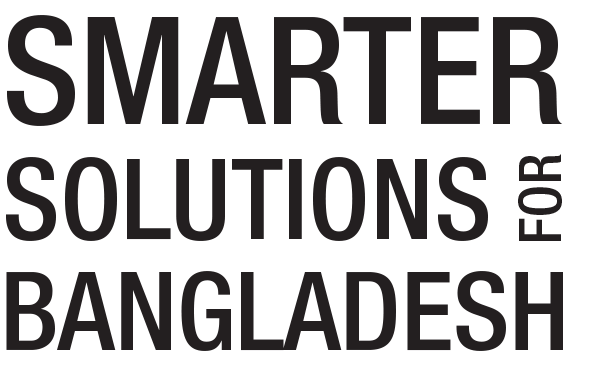How to improve Dhaka's public services for future growth
by Bjorn Lomborg
Bangladesh has experienced remarkable economic growth in recent years. At the same time, Dhaka has not only become one of the most densely populated cities in the world—it is now also one of the largest unplanned urban centers.
More than a third of the city’s population of 18 million is designated as poor, mostly confined to slum areas of the metropolitan footprint. The United Nations projects that by 2050, an additional 20 million people will live in Dhaka, driving population density even higher.
Such rapid and unplanned urbanization presents enormous challenges. Regular garbage collection occurs for only half of city waste. The river systems in the metro area have become so polluted that they threaten both human and animal health. And a lack of proper drainage leads to routine flooding that disrupts transportation and economic activity.
New research from Bangladesh Priorities examines the smartest ways to cope with the challenges that have resulted from the capital’s rushed and largely unplanned growth. The project, a partnership between the Copenhagen Consensus Center and BRAC, has commissioned dozens of top economists from the country, region, and world to study the most promising solutions for issues that range from education to land records to climate adaptation. The goal is to help discover how Bangladesh can do the most good for every taka spent on her development efforts.
| Strategy | Takas of benefits per taka spent |
|---|---|
| Solid waste management in Dhaka | 6 |
| Restoration of Buriganga river system | 1.5 |
| Stormwater drainage in Dhaka | 2 |
Most of Dhaka lacks appropriate waste collection services. As a result, roughly half of all solid waste in the city is dumped in roadsides, canals, or low-lying areas, creating environmental and health hazards. The analysis proposes investment in waste management facilities to properly dispose of this garbage.Analysis by Khorshed Alam, an associate professor of economics at the University of Southern Queensland, explores the smartest ways to deal with three growth-related issues in the capital: solid waste management, river restoration, and drainage network improvements.
One aspect would involve sorting garbage at its source, which would allow for either recycling or safe landfilling of solid waste. In addition, facilities would be built to produce compost and biogas, whose end products would generate revenues. The project would provide indirect benefits from landfill costs avoided—these comprise more than 80 percent of the total benefits—due to diverting waste to more efficient uses.
Total spending of Tk 6.3 billion (Tk 630 core) would cover construction of anaerobic composting and biogas plants in 10 different localities of the city, as well as additional waste-collection and operating costs. In all, the spending would give benefits of Tk 39.4 billion (Tk 394 crore)—or about 6 takas of social good for each taka spent.
A related solution would be to fund restoration of the Buriganga River, which has become so polluted from household and industrial waste that its water harms humans and fish alike. Most of the spending would go toward building a wastewater treatment plant for the river, at a cost of approximately Tk 25.6 billion (Tk 2,560 crore). It would also require dredging the river, upgrading the landings, paying to relocate illegal structures, improving sewage infrastructure, and building paths and benches around the river to make it a more pleasant environment. The combined costs would equal Tk 76.8 billion (Tk 768 crore).
Cleaning the river and improving its facilities would make it safer for residents who live nearby, avoiding a massive Tk 91.6 billion (Tk 9,157 crore) in healthcare costs. It would also increase property values in the river areas, provide recreation activities, and produce a cleaner environment and more fish habitat. With overall benefits of Tk 128.2 (Tk 12,822 crore), each taka spent restoring the river system would give about 1.5 takas in benefits.
Lastly, the research examines storm water drainage networks, which currently cover only 39 percent of Dhaka, meaning that much of the population is exposed to regular flooding. A recent World Bank study projects that worldwide, Dhaka will be one of the cities most vulnerable to flooding over coming decades.
Expanding and improving the city’s drainage system requires Tk 68.3 billion (Tk 683 crore), to construct pumping stations, build pipes and sluice gates, and re-excavate certain canals. The benefits would include lower health risks from water-borne diseases and higher property values—especially in low-lying areas. The investment would also reduce economic and transport disruptions, because periods of flooding literally create a barrier to commerce. In all, the investment would do 2 takas of social good for every taka spent.
If you were in charge and wanted to do the most good for Bangladesh, would these infrastructure investments for Dhaka top your list? Let us hear from you at copenhagen.fbapp.io/urbanpriorities. We want to continue the discussion about the smartest ways to do the most good with each taka spent.
Dr. Bjorn Lomborg is president of the Copenhagen Consensus Center, ranking the smartest solutions to the world’s biggest problems by cost-benefit. He was ranked one of the world’s 100 most influential people by Time Magazine.
This article was originally posted in The Daily Star.


